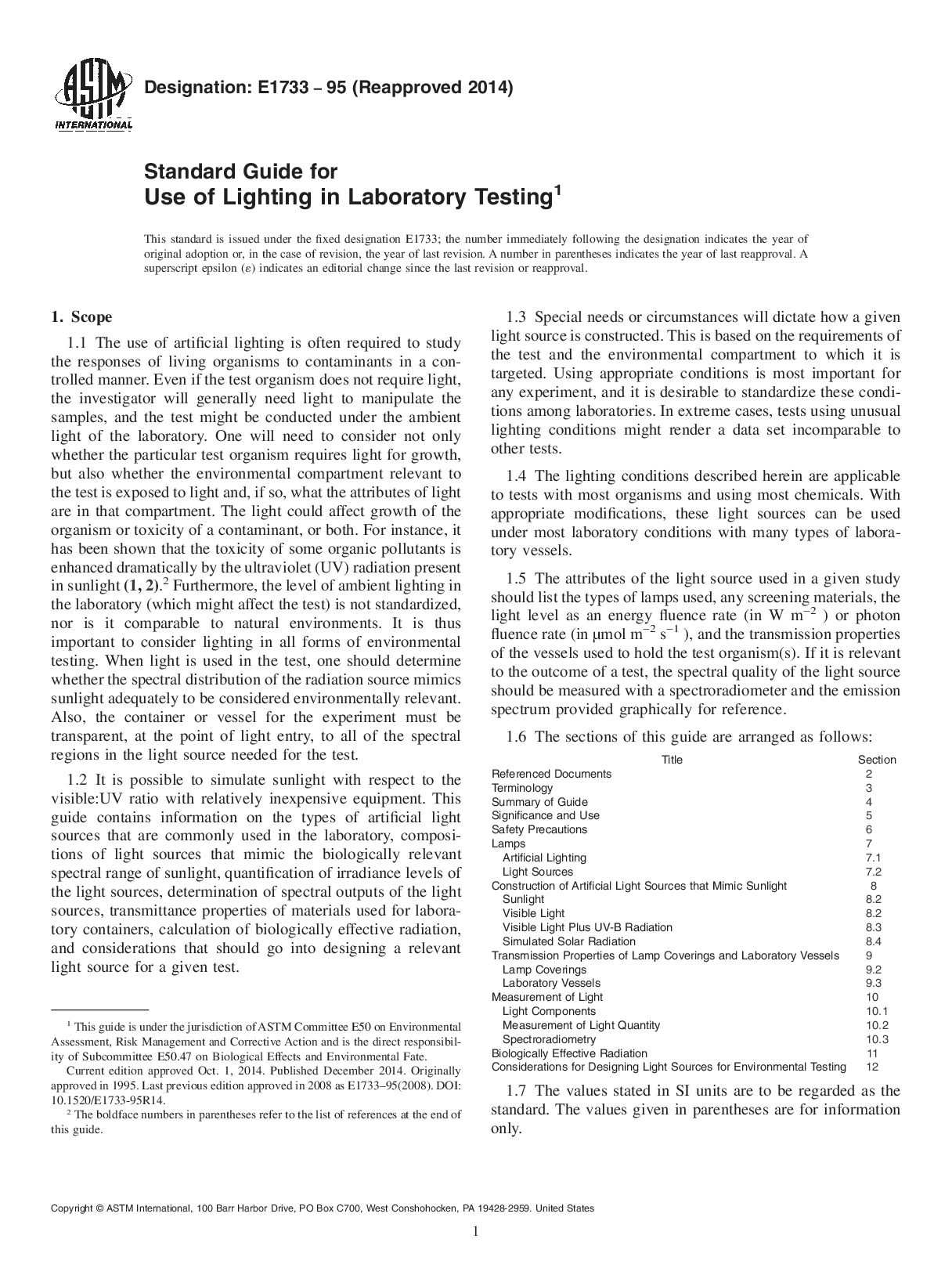ASTM E1733-1995(2014)
实验室试验照明的标准使用指南
Standard Guide for Use of Lighting in Laboratory Testing
- 标准号
- ASTM E1733-1995(2014)
- 发布日期
- 1995年
- 实施日期
- 废止日期
- 无
- 国际标准分类号
- 91.160.10
- 发布单位
- US-ASTM
- 适用范围
5.1x00a0;The information in this guide is designed to allow investigators conducting research or tests of environmental relevance to select appropriate light sources.
5.2x00a0;Investigators will be able to make reasonable selections of light sources based on cost, the requirements of the test organisms, and the properties of the test chemicals.
5.3x00a0;These methods have major significance for the comparison of results between laboratories. Investigators at different sites will be able to select similar light sources. This will provide standardization of a factor that can have major impact on the effects of hazardous chemicals.
1.1x00a0;The use of artificial lighting is often required to study the responses of living organisms to contaminants in a controlled manner. Even if the test organism does not require light, the investigator will generally need light to manipulate the samples, and the test might be conducted under the ambient light of the laboratory. One will need to consider not only whether the particular test organism requires light for growth, but also whether the environmental compartment relevant to the test is exposed to light and, if so, what the attributes of light are in that compartment. The light could affect growth of the organism or toxicity of a contaminant, or both. For instance, it has been shown that the toxicity of some organic pollutants is enhanced dramatically by the ultraviolet (UV) radiation present in sunlight (1, 2) .2 Furthermore, the level of ambient lighting in the laboratory (which might affect the test) is not standardized, nor is it comparable to natural environments. It is thus important to consider lighting in all forms of environmental testing. When light is used in the test, one should determine whether the spectral distribution of the radiation source mimics sunlight adequately to be considered environmentally relevant. Also, the container or vessel for the experiment must be transparent, at the point of light entry, to all of the spectral regions in the light source needed for the test.
1.2x00a0;It is possible to simulate sunlight with respect to the visible:UV ratio with relatively inexpensive equipment. This guide contains information on the types of artificial light sources that are commonly used in the laboratory, compositions of light sources that mimic the biologically relevant spectral range of sunlight, quantification of irradiance levels of the light sources, determination of spectral outputs of the light sources, transmittance properties of materials used for laboratory containers, calculation of biologically effective radiation, and considerations that should go into designing a relevant light source for a given test.
1.3x00a0;Special needs or circumstances will dictate how a given light source is constructed. This is based on the requirements of the test and the environmental compartment to which it is targeted. Using appropriate conditions is most important for any experiment, and it is desirable to standardize these conditions among laboratories. In extreme cases, tests using unusual lighting conditions might render a data set incomparable to other tests.
Copyright ©2007-2022 ANTPEDIA, All Rights Reserved
京ICP备07018254号 京公网安备1101085018 电信与信息服务业务经营许可证:京ICP证110310号



